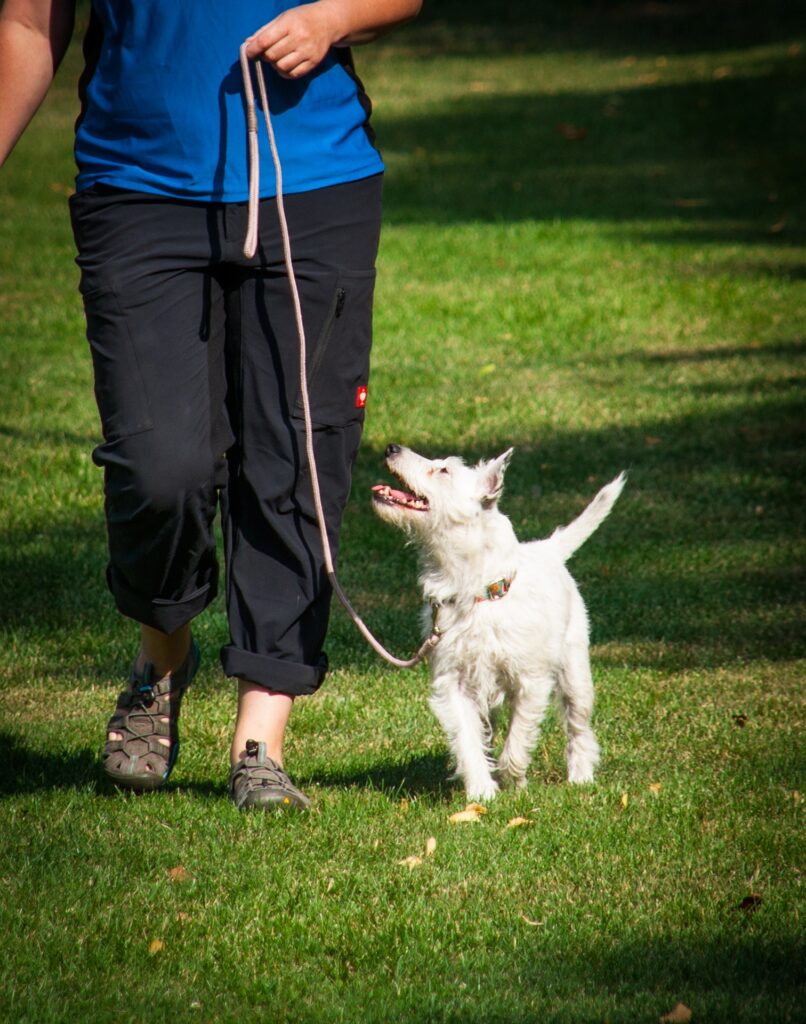Going out for walkies can be the most exciting part of your dog’s day. It’s easy to see why your dog might start pulling on their lead to get where they want to go faster.
To make sure you’re safe from being pulled over, it’s important to teach them to walk calmly.
One of the most common reasons dogs pull on their lead is because they’ve learned that’s how they get to move forward. Whenever your dog pulls, taking just one step with them gives a clear signal that pulling works.
Teaching your dog to walk with a loose lead takes a great deal of patience and time. But it’ll be well worth it when you’re out on a lovely, calm stroll with your best pal.
Walking Nicely on the Lead: A Step-by-Step Guide
1. Choose Equipment that is Comfortable and Safe
A quick internet search will show you equipment that promises to ‘cure’ pulling, but some equipment causes pain or discomfort when the dog pulls by putting pressure on sensitive areas. It’s important to choose gear that is comfortable for your dog and promotes positive training.
Stay tuned for more tips on teaching your dog to walk calmly on a lead!
2. Reward your dog when they are by your side
You need to teach your dog that being near you pays off.
Starting in your home or garden where it’s calmer, reward your dog for sitting or standing by your side. It’s much easier for your dog to learn new behaviours in quiet places where they won’t be easily distracted.
3. PRACTICE WITHOUT THE LEAD
At first, practice without the lead attached. Then you can start to introduce it once your dog is reliably following you.
You may need to hold something your dog wants, like a tasty treat or fun toy, to get them to stand and walk by your side to start with.
You’ll need to do this less over time, but remember to always praise them when they stick close to you.
Stay tuned for more tips on teaching your dog to walk calmly on a lead!
4. Stop walking when the lead starts to tighten
Teach your dog that walking next to you with a loose lead means they get to move forward – and pulling means they don’t.
The second the lead starts to tighten, stop walking. Stand still, keep quiet and don’t move forward again until the lead is slack.
Don’t jerk the lead back or tell your dog off – just stand and wait calmly and quietly.
If your dog does not turn back to you, try walking a couple of steps in the opposite direction to get their focus back.
5. CONSISTENCY IS THE KEY
Be consistent with your training each time you go out with your dog.
This may take time but will be well worth the effort in the end.
You should expect walks to take longer while your dog is learning. But if you stick with it, your reward will be enjoyable walkies with a calm, happy dog who no longer pulls.

